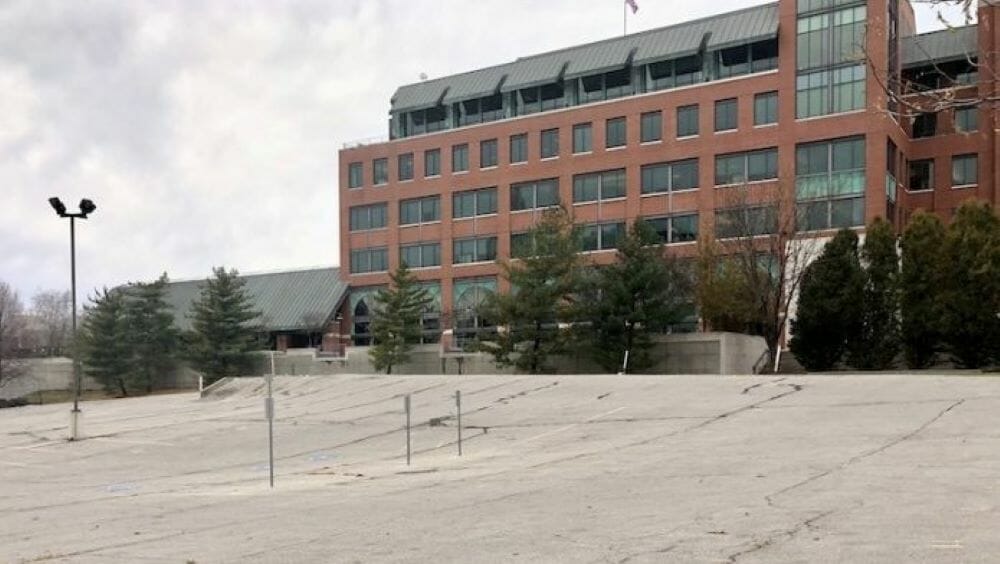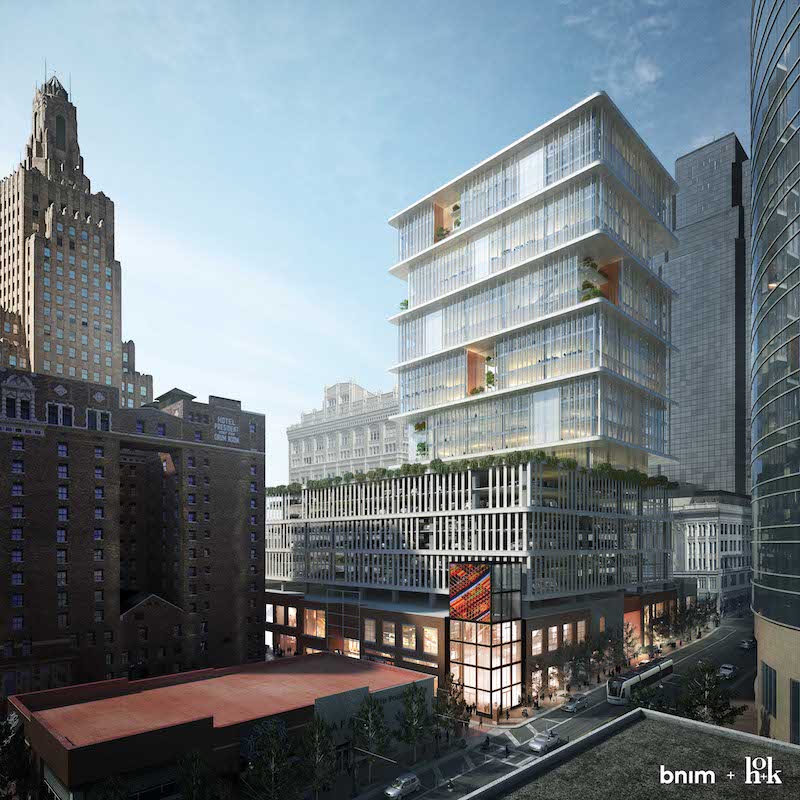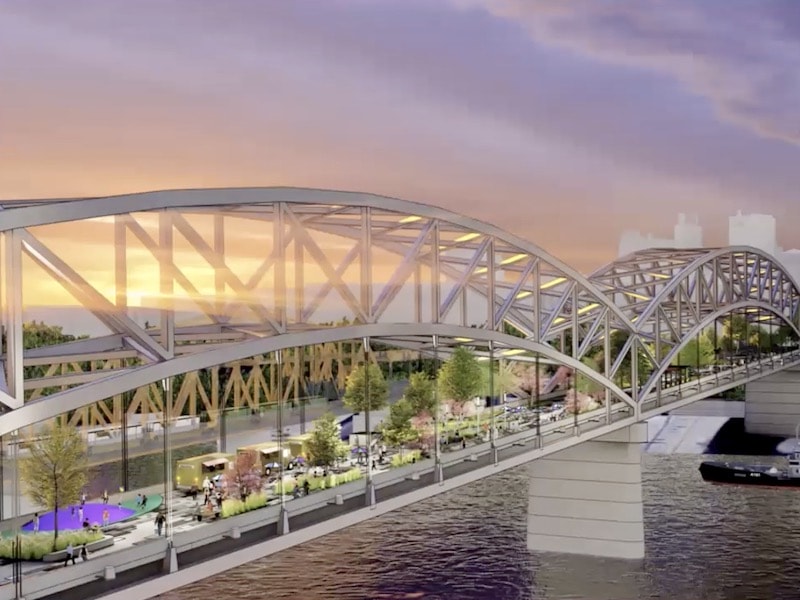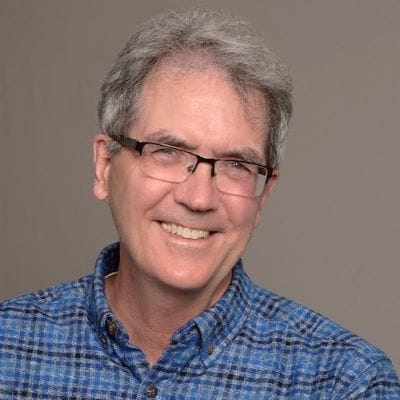City Manager Brian Platt Talks About Potential Railroad HQ Expansion, Police

Published April 21st, 2022 at 11:30 AM
By Kevin Collison
City Manager Brian Platt continues his conversation with CityScene KC covering topics including a potential expansion by Kansas City Southern once its merger with Canadian Pacific is concluded, the Buck O’Neil Bridge linear park concept and the police department.
Word is Kansas City Southern may expand its downtown presence following its merger with Canadian Pacific, which has announced it will relocate its U.S. headquarters from Minneapolis to KC.
The city owns the parking lot next door to KC Southern at 12th and Broadway, what can you tell us?
“We have a good working relationship with them. They want to expand. We own some property, that parking lot, they own some property. We’ve had conversations about partnerships and collaborations there.
“We’re waiting for them to confirm what their official plans are with this merger. We don’t want to do anything either way before we know they definitely do want to expand or don’t want to expand.
“We’re in a holding pattern. We’ve spoken to them quite a bit about things that they may want or not want there. Nothing formalized or set in stone because this merger is not complete, but it could be in the next couple of months.”

The 25-story Strata development is proposed as a speculative office building at 13th and Main. (Rendering from BNIM and HOK)
The downtown revival of the past 20 years has brought thousands of new residents and many more attractions, but private employers have been missing from equation.
What can the city do to make it more attractive for businesses?
“We certainly have work to do and more opportunity when it comes to attracting jobs, not just within Kansas City, but in the region.
“We need to improve our incentive offerings for those types of corporations to come here and we need to have a better dialogue and communication with some of those agencies and groups that are trying to engage companies to come here.
“It’s a tough time to try to build or attract new office tenants. The pandemic has put everybody on pause.
“That said, the market will return sometime, we don’t want to be caught flatfooted and in a position we don’t have any office space to compete with other cities, not just in region, but Chicago, Dallas, Nashville…
“We need to have something to point that’s ready for somebody to move in in two or three or four years when they make those decisions.
“Building a vibrant, energetic, lively downtown will be a big part of that. The streetcar is a big part of that. People need to want to be there, want to be in the shiny, new tower downtown.”
The 1400KC building will be ready soon for spec office use, what about other office plans in the pipeline including Strata, Platform Venture and the Copaken Brook proposal at 13th and Grand?
“We’ve had a few other discussions as well with other developers for new office space and mixed use high-rise buildings. I hope in next few months we’re gong to have more formal proposals and recommendations to go before Council to push these things forward.”

A look at how a linear park might work on the O’Neil Bridge. (Rendering by Confluence)
There’s a proposal now being studied to repurpose the old Buck O’Neil Bridge as a linear park after the new bridge opens. Why is it considered a city priority?
“At this point, w’re just trying to understand what the costs are and the limitations of the project. One of the things I’ve noticed coming from the New York/New Jersey area is we do not interact with our waterfront at all right now…and we need to change that.
“We need to create more access to the river, we need to create more development and opportunity along the waterfront in general and this is a great way to kickstart that. It doesn’t hurt to do a study and understand what the options are and how much it’s going to cost.
“As the waterfront builds up…it becomes much more logical down the road. This is not something we’ll do in next six months, but we’ll study it and understand our options.
“We’re all hugely supportive of what’s going on with the riverfront, the only (Port KC) ask we’ve had is can you add more floors and can you add more activity and density to those sites?”
What will be the impact of the planned streetcar extensions from downtown to UMKC and the riverfront?
“The streetcar extension will transform those neighborhoods and unlock opportunies for people across the city. We’re already having discussion about extensions north across the river potentially to the airport and east to stadiums across the East Side and multiple places.
“Right now, the limitation is the streetcar doesn’t go enough places to give enough people those opportunities. The more places we connect the more people will use it and the less dependent we’ll be on cars and the more walkable, transit oriented city we can create.”
 Crime is a big problem in Kansas City with our homicide rate among the top 10 in the country.
Crime is a big problem in Kansas City with our homicide rate among the top 10 in the country.
Given the unique arrangement where the Kansas City Police Department is run by a state-appointed commission, is there anything the city can do to encourage police to become more proactive?
“We have our work cut out for us on the crime issue in Kansas City and the murders and we’ve got some ideas on the civilian side of things, but at the end of the day, unfortunately it is the sole authority of the KCPD to make any of these changes and to change the way they police and their policies.
“We hope with the new chief brings new leadership across the board and we have the ability to move some of these things forward.
“There’s also a lot of interventional techniques we could deploy that we’ve attempted over time in small scale and piloted, NOVA is an example, we just need to be more aggressive and proactive and try them on a larger scale.
“We need to get in front of our communities a little bit more and build better relationships and be more present in some of those conversations with community leaders to make sure we’re all on the same team in finding the causes of violence and the roots of it all.”
Jersey City has a far lower crime rate than Kansas City, are there police practices you saw during your time in city government there that you think would be helpful here?
“Absolutely. A few things in particular are important.
“One is a proactive response to shootings and non-fatal shootings in particular. If the victim is still alive they can potentially become a witness and help us better understand who is the perpetrator in some of these things.
“A lot of times these shootings occur between repeat offenders. Just to have a dedicated team that can very aggressively go after both the perpetrators and victims in those types of engagements and crimes goes a long way.
“It sends a signal that we’re watching, we’re listening, we are having communication with people and building relationships to know we’re out there.
“Another big part is having a very visible presence is helpful. Some of the things we did in Jersey City were very obvious, we would take a police car, put the lights on, park it on a corner where we get a lot of calls for service and leave it there all night.
“That is the signal for anyone who’s involved in dangerous activity that can’t happen anymore. We have police everywhere. It’s an overnight transformation of some of those neighborhoods where you have a very visible presence.
“It could be portable security cameras, it could be foot patrols, whatever we can do to make a more visible presence can go such a long way. Whatever we can do to very aggressively go after the perpetrators of dangerous criminal activity that will also help.
Kansas City police drive dark blue vehicles that aren’t particularly visible, which is not the case in other cities. What’s your take on that?
“Visibility is by far one of the best techniques to reduce the perception that no one is watching. In Jersey City and other places the cars had yellow writing, were black and white and were larger vehicles that you could see the emergency lights on more than you would expect.
“(Washington) DC cars have a low power setting on emergency lights, even if it’s not responding to a call, you can see the police car from a long ways away. That’s proven technique to drive away unwanted activity.
“I’m not saying it will end it, but if you think no one’s watching it changes the way that you’re going to approach something.”
After 16 months as city manager, what are your impression of your new home?
“I love it here. It’s an amazing place to live. The people are incredibly nice and welcoming and warm. Kansas City has so much to offer and is a great place to be all the time.
“There’s a lot of opportunity for me to work on very large scale, complex, transformative challenges: homelessness, crime, affordable housing, basic city operations. That’s what excites me personally.”


